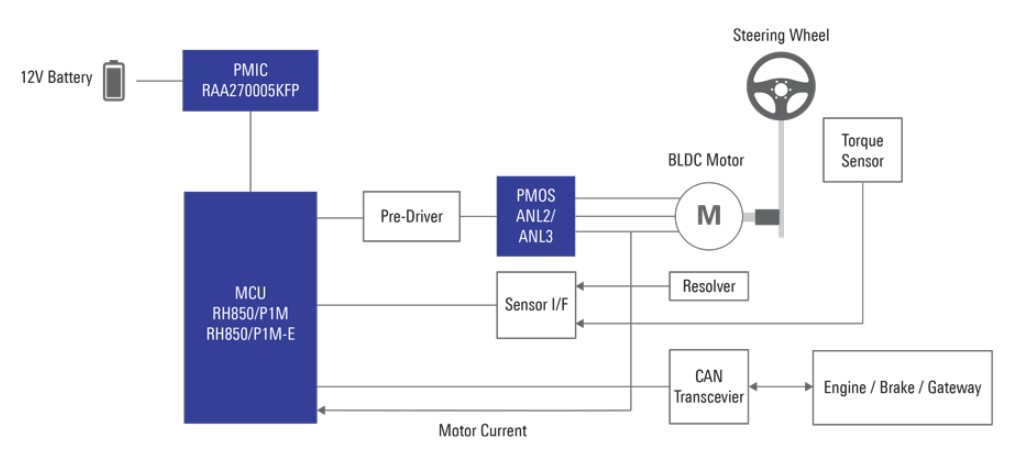Nice to meet you. I am Daichi Kobayashi, an application engineer.
Do you know the product "PMIC"? Today, I would like to talk about PMIC for automotive applications.
Recently, automotive technology, such as electrification, autonomous and connected, advance very rapidly. The number of microcontrollers (MCUs) and their performance are increasing along with automotive technology progress.
On the other hand, the high-performance MCU requires multiple power supplies such as 5V, 3.3V and 1.25V. And, the power-up order and timing (i.e., power sequence) of power rails should be carefully investigated. The system designers, who use MCUs, need to be careful in their development.
Also, the PMICs are usually required for various monitoring /diagnosis functions and protective functions for automotive applications to realize safety systems. For example, each power rail's overvoltage and undervoltage detection, overcurrent detection, die-level over-temperature detection, and MCU operation monitoring.
For the problems mentioned above, Renesas provides automotive-grade PMICs dedicated to our top shared MCU as the MCU power solution. When you use a PMIC and MCU as a kit, Renesas can provide the following merits.
- Reduce development effort and time by using the PMIC which controls complicated power sequences (power-up/power-down order and timing).
- Reduce PCB area size by using the PMIC which is integrated with several functions such as power supplies, power monitoring and diagnostic functions required by the target MCU.
- Reduce development costs and time by using a qualified reference design, recommended BoM list and design guides.
As mentioned above, Renesas can provide an appropriate PMIC for the target MCU.
Now, I would like to introduce one of the PMIC's monitoring functions.
A watchdog timer (WDT) function is implemented in the PMIC to monitor MCU operation. During MCU operation, the PMIC requires a trigger to MCU. If the trigger is not replied in terms of timing/format correctly from MCU, PMIC generates a reset pulse to the MCU. Owing to the WDT function, the MCU can be backed to the safe state by the PMIC even if any problems occur to the MCU.
Also, RAA270005, which is a dedicated designed PMIC for the RH850/P1x MCU, can support the automotive unique requirement called "Cranking operation". The automotive battery sends a large current to the starter motor when starting the engine. This large current temporarily decreases battery voltage. (For example, in case of 200A flowing, 2V under-voltage occurs if the wiring resistance is 0.01Ω in simple estimation. The automotive battery is typically 12V, so this undervoltage affects influence the system. Now, you understand, don't you?)
In several automotive applications, it is required to operate the MCU during a low battery voltage condition of about 2V. Therefore, the RAA270005 implements a boost circuit and supports the requirement to provide a stable power supply during undervoltage. The following figure shows an example of an electric power steering system.

We, Renesas, also encourage designers to develop MCU peripheral devices by utilizing the experience of MCU development, for providing a total solution.
We can reduce customers' development time/cost by adopting a Renesas PMIC for MCU power solution. If you are interested in our power solutions for RH850 microcontrollers, please refer to the following links and contact our sales team.
Solution Examples for the RH850 PMIC
Electric Power Steering System
Automotive Battery Management System (BMS)
